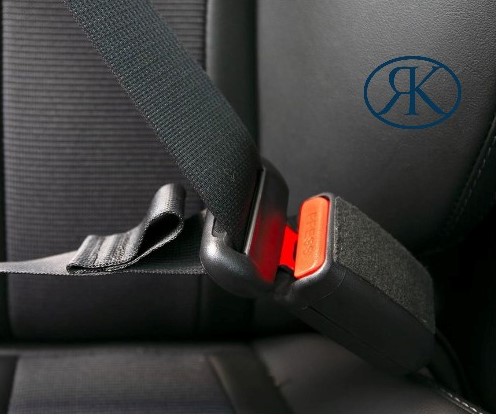
Doing this one thing may save your life while in a car
FALSE ASSUMPTIONS ABOUT MOTOR VEHICLE CRASHES AND WHY SEATBELTS ARE IMPORTANT
Many people, if not almost all, believe most crashes that result in deaths happen at high speeds and well away from our homes. Wrong. The facts do not support these assumptions or beliefs. Rather, the data shows that 80% of deaths occur in cars traveling less than 40 miles per hour, and 75% of crashes occur within 25 miles of our homes.
Louisiana law makes it mandatory for all drivers and passengers in cars, vans, and pickup trucks to wear seatbelts. Wearing a seatbelt reduces the risk of serious injury and death by 50%. Those less likely to wear them are teens, commercial drivers, males in rural areas, pickup drivers, people driving at night, and people who have been drinking. The bottom line is simple. “Buckle up.” Studies show that wearing a seatbelt is the smartest move that drivers can make to prevent injury or death. Here are some facts:
- Your chances of being killed are 25 times greater if you are thrown from your vehicle.
- Non-belted fatalities have been recorded at speeds as low as 12 miles per hour.
- The force of an impact at just 10 miles per hour is equal to the force of a 200 pound bag of cement dropped from a first story window.
- If everyone who is involved in a crash wore a seatbelt at the time of the crash, 60% more lives could be saved.
- 1 in 7 adults choose not to wear seatbelts.
Concerning children, the Louisiana Child Passenger Restraint law requires that all children must be properly restrained and secured in an age- or size-appropriate passenger restraint system that meets the applicable federal motor vehicle safety standards. Here is that information:
- A child 6 years or younger or under 60 lbs. may not be transported in the front seat of a vehicle with an active airbag.
- Birth or less than 20 lbs. at any age – rear-facing, federally approved car seat
- 1-4 years, at least 20 lbs. but less than 40 lbs. – forward-facing, federally approved car seat
- 4-6 years, at least 40 lbs. but less than 60 lbs. – booster seat with restraints
- 6 years, more than 60 lbs. – booster seat with restraints or seat belts
- Booster seats are an appropriate option for a child of any age.
If you remember one thing it is wearing seatbelts saves lives and reduces the risk of serious injuries. To repeat, “Buckle up” and make sure that your passengers and children also are buckled up and in proper restraints.
If you have been injured in a crash and have questions, call us today! The sooner we meet, the faster we can evaluate your case and, if you choose to hire us, the faster we can begin to help you maximize your recovery.

Don’t Get Turned Around in A Roundabout
Roundabouts are also called traffic circles. Roundabouts are one-way, circular intersections designed to improve safety and efficiency for motorists, bicyclists, and pedestrians. In a roundabout, traffic flows counterclockwise around a center island. A roundabout redirects some of the conflicting traffic, such as left turns, which cause crashes at traditional intersections. This is because drivers enter and exit the roundabout through a series of right-hand turns.
Roundabouts replace regular intersections. They do not have stop signs, which eliminates the cost of electric traffic signals. Drivers must yield when entering and exiting a roundabout and must travel in a counterclockwise direction. Greater safety is achieved primarily by slower speeds and the elimination of more severe crashes and operation is improved by smooth-flowing traffic with less stop-and-go than a signalized intersection. Aesthetics are enhanced by the opportunity for more landscaping and less pavement, according to the DOTD. Roundabouts were first introduced in the U.S. in the 1990s. And since September 2003, some 174 more have been built in Louisiana according to the DOTD.
While intended to improve traffic flows and increase safety, roundabouts do not eliminate all traffic crashes. Many of the roundabout crashes are caused by drivers who are unfamiliar with them and the traffic rules that govern them. It is important to know that roundabouts may have two or more lanes, so know which lane you need before you enter the traffic circle.
Common Reasons for Crashes At Roundabouts
- Failure to yield to traffic that is already in the circle.
- Failure to yield to bicyclists and pedestrians.
- Drivers who stop abruptly in the circle because they are confused or missed their turn.
- Speeding when entering the circle.
Preventing Roundabouts Crashes
You cannot control the actions of other drivers. But if you obey some basic rules for roundabouts, you can help prevent a wreck:
- Slow down as you approach a roundabout.
- Yield to traffic that is already in the roundabout.
- Use your turn signal when exiting the roundabout.
- Give trucks and larger vehicles enough space to maneuver and exit the roundabout.
- Do not stop once you are in the traffic circle.
- Know which exit you need to take before you enter the circle.
Roundabout Crash Legal Timeline
Under Louisiana law, an crash victim has one year from the date of injury to file a lawsuit or, if possible, settle the case. When this one-year period expires, the crash victim loses the right to sue the wrongdoer for both economic and non-economic damages.
If You Need An Experienced Attorney
Call us today. We have been helping those injured for over 50 years. We work for our clients, explaining the laws that protect them, the laws that were broken, understanding the facts and our client’s injuries and how those injuries have impacted their daily lives, their goals, and their dreams. So, if you need a great lawyer, call us at (337) 232-1934 to get started.

Kennedy Law Blog | Coming Soon
Please check back soon for an all-new informative blog by Kennedy Law.
